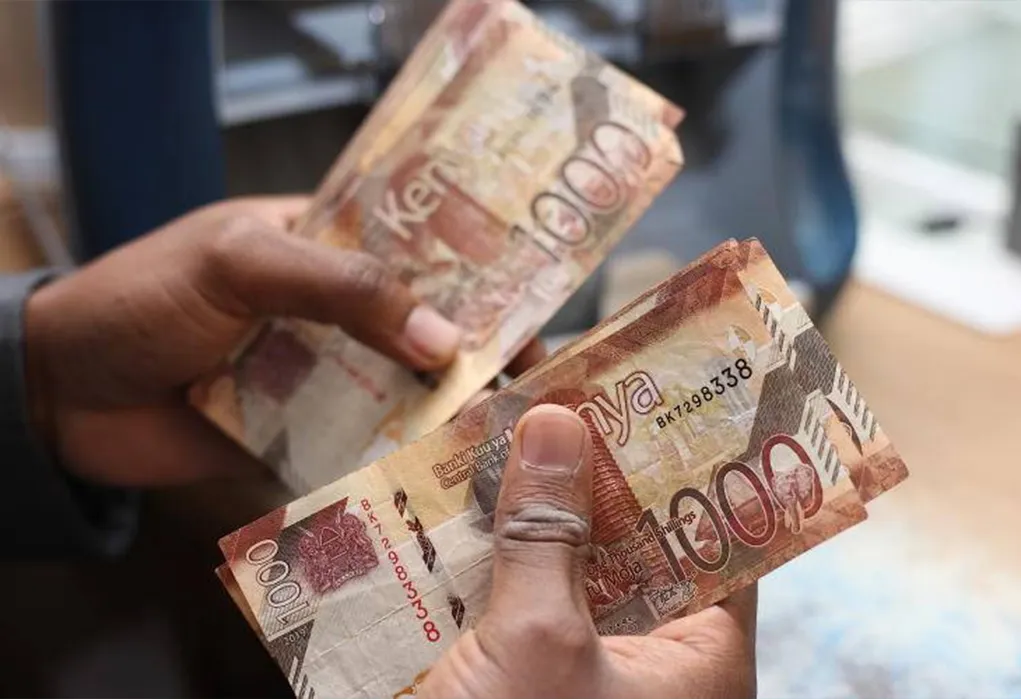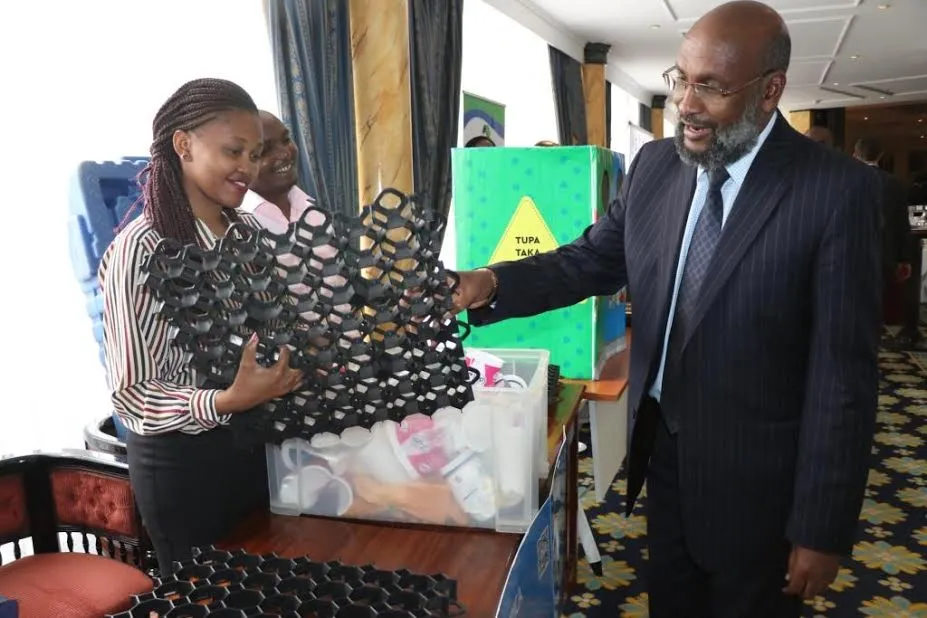The Central Bank of Kenya (CBK) has announced the reopening of two fixed-coupon Treasury bonds in October 2025 — FXD1/2018/015 (12.650%, due May 2033) and FXD1/2021/020 (13.444%, due July 2041). Together, these issues target KSh 50 billion in fresh funds to provide critical budgetary support.
This move marks yet another step in a clear pattern: the government is relying on heavy reopenings in FY25/26 to accelerate its borrowing program and plug an estimated KSh 923.2 billion fiscal deficit. The plan reflects a pragmatic but pressing need to raise funds early, manage a heavy debt service calendar, and avoid roll-over pressures later in the fiscal year.
Build the future you deserve. Get started with our top-tier Online courses: ACCA, HESI A2, ATI TEAS 7, HESI EXIT, NCLEX-RN, NCLEX-PN, and Financial Literacy. Let Serrari Ed guide your path to success. Enroll today.
According to the National Treasury’s borrowing plan, Kenya’s net financing needs for FY25/26 stand at KSh 901 billion. Out of this, KSh 613.6 billion is expected from domestic markets and KSh 287.4 billion from external sources. Gross financing requirements, which include redemptions of maturing obligations, total a massive KSh 1.55 trillion.
A Front-Loaded Borrowing Strategy
The decision to push forward large domestic issuances is not accidental. It reflects a broader philosophy of front-loading borrowing to secure liquidity and manage refinancing risks. By locking in funds early, the government can manage redemptions while taking advantage of prevailing yields before potential market shifts.
Domestic debt service alone for FY25/26 is projected at KSh 1.3 trillion, part of a total KSh 1.9 trillion debt service bill. These figures highlight why the Treasury and CBK are turning repeatedly to the domestic market.
The pattern of reopenings reveals a deliberate preference for existing long-dated benchmarks in the 15- to 25-year maturity band, while the ultra-long 30-year sovereign bond continues to face weaker investor appetite.
Borrowing Progress So Far in FY25/26
The first quarter of FY25/26 illustrates how aggressive CBK has already been:
- July 2025 Reopenings: The CBK reopened the 20-year FXD1/2018/020 and 25-year FXD1/2018/025, raising KSh 66.7 billion against a KSh 50 billion offer. Demand demonstrated strong investor appetite for mid-to-long tenor paper.
- August 2025 IFB Reopenings & Tap Sale: Infrastructure bonds stole the spotlight. A reopening and subsequent tap sale saw bids skyrocket to KSh 323.4 billion. The CBK accepted KSh 95 billion in reopenings and KSh 179.8 billion in tap sales, netting nearly KSh 275 billion in a single month. This was among the most oversubscribed bond auctions in Kenya’s history.
- September 2025 Reopenings: Results were mixed. A 30-year Sovereign Development Bond (SDB) attracted only 40% subscription, highlighting investor caution at the ultra-long end. However, the 20- and 25-year bonds rebounded strongly, raising KSh 61.4 billion.
By end-September, CBK had raised well over KSh 400 billion domestically, already covering more than 40% of the net domestic borrowing target for the year.
Why Investors Are Buying
Despite Kenya’s high borrowing needs, several factors are sustaining demand for long-term bonds:
1. Tax-Free Infrastructure Bonds
Infrastructure bonds (IFBs) are exempt from taxes, giving them a strong edge over conventional instruments. This makes them attractive to pension funds, SACCOs, and high-net-worth investors seeking tax-efficient yields.
2. Attractive Yields Near 14%
Even conventional long bonds have drawn strong bids at yields around 14%, which compare favorably to short-term Treasury bills. For institutional investors, these returns provide a steady stream of fixed income in a volatile environment.
One decision can change your entire career. Take that step with our Online courses in ACCA, HESI A2, ATI TEAS 7, HESI EXIT, NCLEX-RN, NCLEX-PN, and Financial Literacy. Join Serrari Ed and start building your brighter future today.
3. Secondary Market Liquidity
The Nairobi Securities Exchange (NSE) has seen record turnover in government securities this year, with the bond market surpassing KSh 2 trillion in secondary trading by September 2025. Strong liquidity makes it easier for investors to exit positions, supporting demand in primary auctions.
4. Ratings Upgrade Boosts Confidence
In August 2025, S&P Global Ratings upgraded Kenya’s sovereign rating from B- to B, citing improved liquidity management and fiscal reforms. This upgrade has reassured investors that Kenya’s risk profile is improving, encouraging participation in longer-tenor bonds.
Risks of Heavy Domestic Borrowing
While the front-loading strategy secures funding early, it also introduces risks:
- Rollover Risk: Heavy reliance on short- to medium-term domestic debt creates the danger of constant refinancing pressure.
- Market Saturation: Frequent reopenings can overwhelm investor capacity, particularly if coupon levels plateau.
- Crowding Out Private Sector: By raising so much from the domestic market, the government risks limiting credit available to businesses and households.
- Sensitivity to Global Shocks: Kenya’s bond market is not isolated. A sudden rise in global yields, U.S. Federal Reserve tightening, or regional instability could weaken investor appetite and push borrowing costs higher.
Government Strategy: Debt Buybacks & Maturity Managemen
In response to looming redemptions, the government is also exploring debt buybacks and liability management operations. The plan would involve repurchasing bonds nearing maturity while simultaneously issuing longer-dated instruments to smooth Kenya’s redemption profile.
For example, with KSh 495 billion in domestic bonds maturing in 2025 and KSh 822 billion in 2026, buybacks could help mitigate refinancing spikes and maintain market confidence.
Market Outlook
Looking ahead, several trends will shape the Kenyan debt market in FY25/26:
- Continued Front-Loading: Expect CBK to raise a large portion of its annual target within the first half of the year, reducing uncertainty around fiscal execution.
- Infrastructure Bonds to Dominate: IFBs will remain the most attractive instruments due to tax exemptions and strong secondary demand.
- Potential for Ultra-Long Weakness: Unless incentivized with higher yields, ultra-long bonds (30 years and above) will likely continue to struggle.
- Regional Leadership: With its deepening bond market, Kenya is positioning itself alongside South Africa and Nigeria as one of Africa’s most active fixed-income hubs.
- Investor Diversification: Digital platforms such as Dhow CSD will continue bringing in retail flows, helping diversify the investor base and reduce reliance on foreign buyers.
Conclusion
The reopening of FXD1/2018/015 and FXD1/2021/020 underscores the government’s determination to front-load borrowing for FY25/26, even as debt service obligations mount. With strong investor demand, supportive ratings upgrades, and a deepening secondary market, Kenya’s bond program is finding traction.
But the strategy is not without risk. Heavy reliance on domestic markets could amplify rollover challenges, crowd out private lending, and expose Kenya to external shocks. To sustain momentum, authorities will need a delicate balance: aggressive issuance combined with prudent liability management.
If executed carefully, 2025/26 could go down as a pivotal year when Kenya cemented its reputation as one of Africa’s most dynamic fixed-income markets.
Ready to take your career to the next level? Join our Online courses: ACCA, HESI A2, ATI TEAS 7 , HESI EXIT , NCLEX – RN and NCLEX – PN, Financial Literacy!🌟 Dive into a world of opportunities and empower yourself for success. Explore more at Serrari Ed and start your exciting journey today! ✨
Track GDP, Inflation and Central Bank rates for top African markets with Serrari’s comparator tool.
See today’s Treasury bonds and Money market funds movement across financial service providers in Kenya, using Serrari’s comparator tools.
Photo source: Google
By: Montel Kamau
Serrari Financial Analyst
2nd October, 2025
Article, Financial and News Disclaimer
The Value of a Financial Advisor
While this article offers valuable insights, it is essential to recognize that personal finance can be highly complex and unique to each individual. A financial advisor provides professional expertise and personalized guidance to help you make well-informed decisions tailored to your specific circumstances and goals.
Beyond offering knowledge, a financial advisor serves as a trusted partner to help you stay disciplined, avoid common pitfalls, and remain focused on your long-term objectives. Their perspective and experience can complement your own efforts, enhancing your financial well-being and ensuring a more confident approach to managing your finances.
Disclaimer: This article is for informational purposes only and does not constitute financial advice. Readers are encouraged to consult a licensed financial advisor to obtain guidance specific to their financial situation.
Article and News Disclaimer
The information provided on www.serrarigroup.com is for general informational purposes only. While we strive to keep the information up to date and accurate, we make no representations or warranties of any kind, express or implied, about the completeness, accuracy, reliability, suitability, or availability with respect to the website or the information, products, services, or related graphics contained on the website for any purpose. Any reliance you place on such information is therefore strictly at your own risk.
www.serrarigroup.com is not responsible for any errors or omissions, or for the results obtained from the use of this information. All information on the website is provided on an as-is basis, with no guarantee of completeness, accuracy, timeliness, or of the results obtained from the use of this information, and without warranty of any kind, express or implied, including but not limited to warranties of performance, merchantability, and fitness for a particular purpose.
In no event will www.serrarigroup.com be liable to you or anyone else for any decision made or action taken in reliance on the information provided on the website or for any consequential, special, or similar damages, even if advised of the possibility of such damages.
The articles, news, and information presented on www.serrarigroup.com reflect the opinions of the respective authors and contributors and do not necessarily represent the views of the website or its management. Any views or opinions expressed are solely those of the individual authors and do not represent the website's views or opinions as a whole.
The content on www.serrarigroup.com may include links to external websites, which are provided for convenience and informational purposes only. We have no control over the nature, content, and availability of those sites. The inclusion of any links does not necessarily imply a recommendation or endorsement of the views expressed within them.
Every effort is made to keep the website up and running smoothly. However, www.serrarigroup.com takes no responsibility for, and will not be liable for, the website being temporarily unavailable due to technical issues beyond our control.
Please note that laws, regulations, and information can change rapidly, and we advise you to conduct further research and seek professional advice when necessary.
By using www.serrarigroup.com, you agree to this disclaimer and its terms. If you do not agree with this disclaimer, please do not use the website.
www.serrarigroup.com, reserves the right to update, modify, or remove any part of this disclaimer without prior notice. It is your responsibility to review this disclaimer periodically for changes.
Serrari Group 2025












